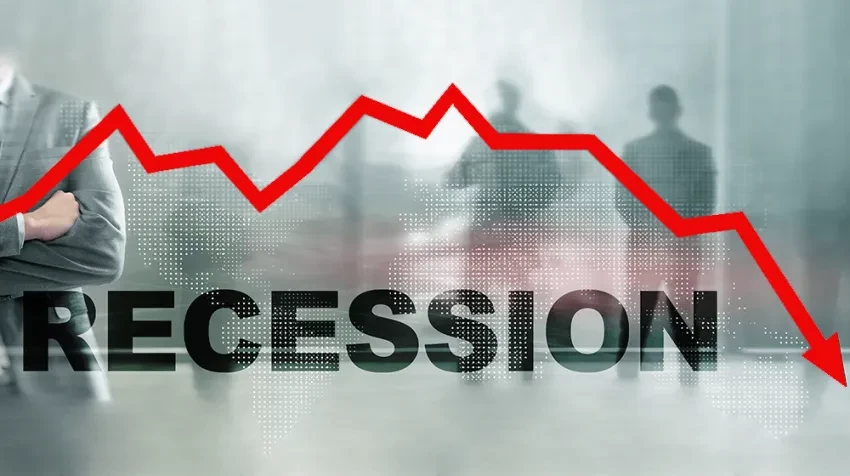
The global economy was left agape when the US Federal Reserve announced a fifth hike in interest rates in the year to a 3%-3,25% range in September 2022 and hinted that more hikes would come until inflation is contained.
The increase came barely a few weeks after the European Central Bank announced its second interest rate hike of 2022 with the very likely possibility of more increments to come. Latest figures reveal that inflation figures in the US and the eurozone remain high at 8,3% and 10%, respectively, and upward pressures driven by Russia’s militarisation of energy resources continue to demand more hikes from many economies’ central banks until inflation is arrested. We identify a resolution of the energy shortage created by the conflict as a panacea to the current global shocks, something that we do not see being achieved in the interim given the lack of sustainable alternative infrastructure and supply chains for energy especially in Europe. With this in mind, fears of a global recession are fast becoming a reality.
A recession, in the broad sense, refers to a prolonged period characterised by a significant decline in economic activity. In the past, recessions have lasted for anything between two months and 18 months.
Recessions are often preceded by high inflation rates which are typically followed by higher interest rates and lower employment rates. To better understand the gravity of the hikes, we unpack the impact through the lens of similar events throughout history.
There are several recessions that have occurred, but we focus on a few that have played out in the last 50 years. The US recession that unravelled between November 1973 and March 1975 was triggered by a supply shock in oil that emanated from the Arab oil embargo.
The subsequent rise in oil price from US$2,75 per barrel in January 1973 to US$7,57 per barrel in March 1975 rippled into other goods, and inflation picked up. Interest rates in the US topped 13% by mid-1974 in a bid to contain inflation that had picked up five percentage points to 7,4% in 1973. By the time the recession was over, the US unemployment rate had risen to 9% against a natural rate of unemployment (NAIRU) of about 4,5%.
The US experienced two more recessions following another oil supply shock that began in 1979 after Iran’s nationalised refineries reduced oil production from six million barrels to 1,5 million barrels. The Iranian revolution caused oil prices to surge from US$9,46 per barrel in January 1979 to US$17,86 in January 1980 and then US$30,80 per barrel in January 1982. The subsequent increase in interest rates from 9% to 13% by the US Fed between 1979 and 1980 resulted in a six-month recession that lasted until July 1980. Persistent inflation-driven by high jobless claims resulted in another recession between 1981 and 1982 that lasted 16 months.
Four other recessions have since been observed, namely the Gulf War recession of 1990, the Dot-com recession of 2001, the Great Recession of 2007, and the Covid-19 recession of 2020. In all these recessions, underlying themes of economic decline, high unemployment, and interest rate volatility have been glaring and unmistakable. Many of these are regarded as US recessions but the ripple effects often cascade beyond US borders — even to less integrated frontier markets such as Zimbabwe – through economic linkages such as trade and investments.
- Will the IMF US$961m windfall rescue Zim?
- Will the IMF US$961m windfall rescue Zim?
- On the precipice of a recession
- Meeting essential human needs
Keep Reading
Looking at the current conflict-driven oil and energy supply shocks in Europe and the subsequent inflationary ripple effects on a global scale, the question, “Are we at the precipice of yet another recession?” has become a talking point among economists and investors alike. We look at one leading indicator — the US yield curve — whose inversion has been a good predictor of a recession.
The yield curve is usually upward sloping but in the months preceding the last eight recessions, the yield curve inverted just before the occurrence of each recesion. In the last six months, yields on three-year US government bonds have increased from 2,6% to 4,2% while 10-year bonds have increased from 2,4% to 3,8% and this has seen the yield curve inverting for maturities ranging between three and 10 years. This is also aptly illustrated by the spread between 10-year one-year treasuries. When the yield curve inverts, the spread becomes negative and this has preceded every recession since 1970. As of the beginning of October 2022, the spread between 10y and 1y treasuries was -0,27%, and this paints a grim picture of the very likely possibility of a recession in the coming months.
A consecutive decline in the US’s quarterly GDP growth rates in 2022 has also seen some scurrying to declare a recession imminent. However, an arbiter on the matter - the National Bureau of Economic Research — is yet to be convinced of such a conclusion. Some investment managers have also not declared a recession imminent but have increased the probability of one well above 50%.
With more interest rate hikes on the horizon, we opine that the global economy is headed for a recession. We also assert that the linkages between Zimbabwe and the global economy will expose the southern African nation to the impending recession, albeit marginally. Zimbabwe’s inflation is one of the highest in the world because of country-specific risks and, to a lesser extent, ripple effects from global inflation.
That said, we concur with analysis in developed markets which identify companies in consumer staples as most resilient during periods of economic downturns like recessions. ZSE-listed companies such as Innscor Africa, National Foods, Meikles and OK Zimbabwe are some of the more resilient stocks investors should consider overweighting in the coming months.
- Mtutu is a research analyst at Morgan & Co. — [email protected] or +263 774 795 854






